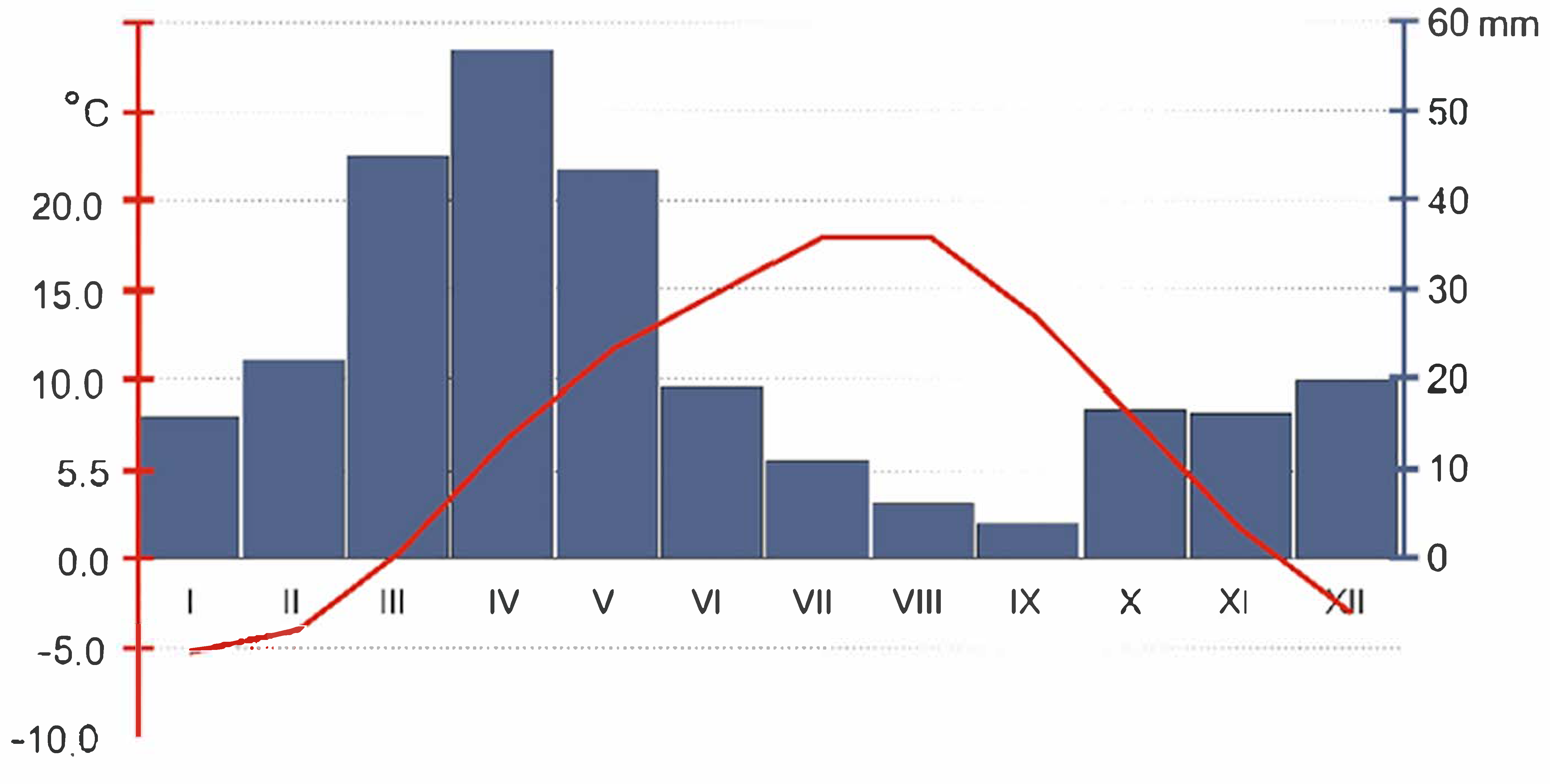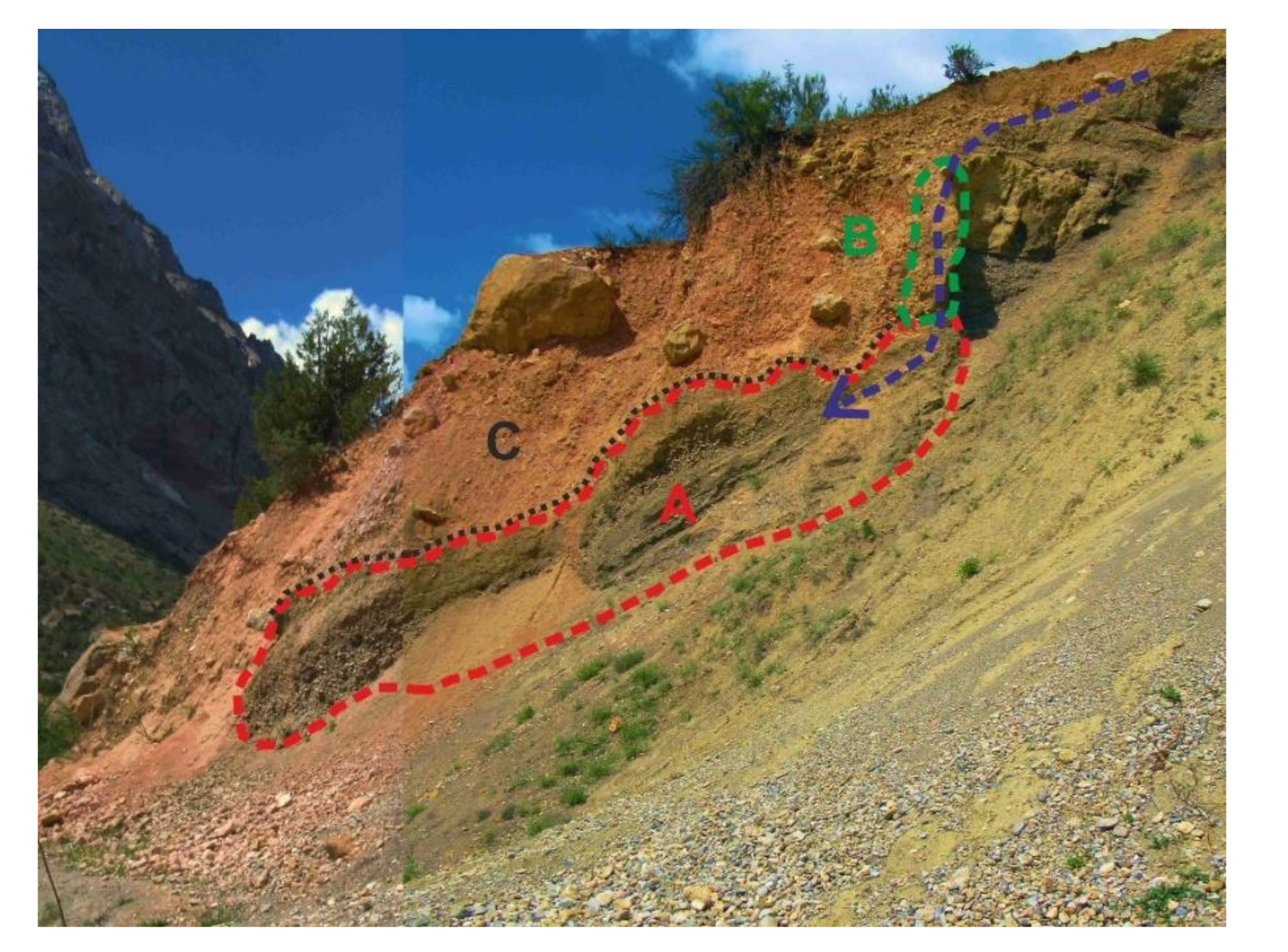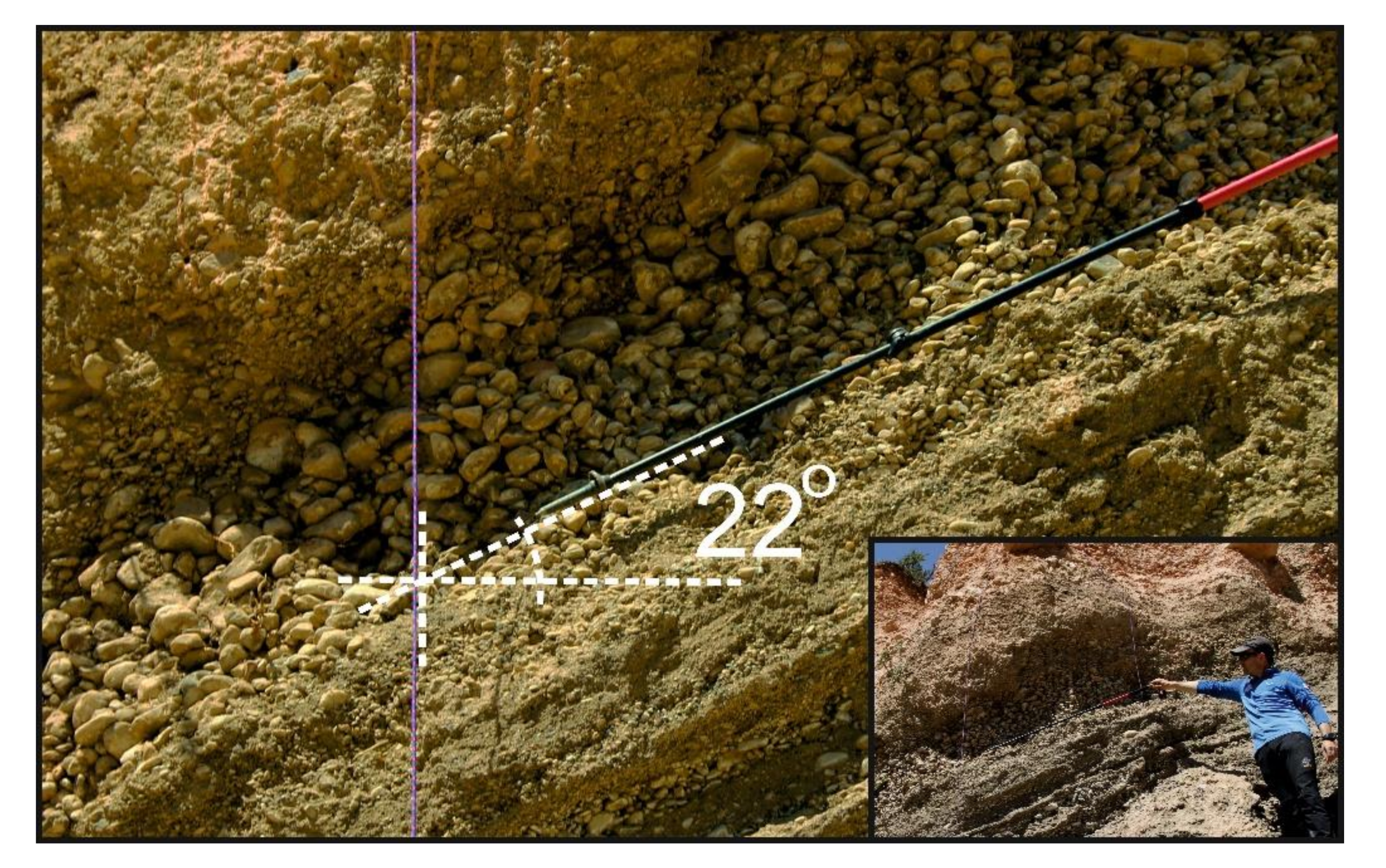Subnival Processes and Subnival Sedimentation Mechanisms, the Pamir-Alay Mts., Tajikistan
Abstract
:1. Introduction
Study Area
2. Materials and Methods
3. Results
4. Discussion
5. Conclusions
Author Contributions
Funding
Institutional Review Board Statement
Informed Consent Statement
Data Availability Statement
Acknowledgments
Conflicts of Interest
References
- Matthews, J.A.; Wilson, P.; Mourne, R.W. Landform transitions from pronival ramparts to moraines and rock glaciers: A case study from the Smørbotn cirque, Romsdalsalpane, southern Norway. Geogr. Ann. Ser. A Phys. Geogr. 2017, 99, 15–37. [Google Scholar] [CrossRef]
- Triglav-Čekada, M.; Barborič, B.; Ferk, M.; Zorn, M. Nationwide aerial laser scanning reveals relict rock glaciers and protalus ramparts in Slovenia. Cryosphere Discuss. 2017, 10, 1–17. [Google Scholar]
- Scapozza, C. Investigation on protalus ramparts in the Swiss Alps. Geogr. Helv. 2015, 70, 135–139. [Google Scholar] [CrossRef]
- Brook, M.S.; Williams, J. A Relict Pronival (Protalus) Rampart in the Tararua Range, North Island, New Zealand. Permafr. Periglac. Process. 2013, 24, 67–74. [Google Scholar] [CrossRef] [Green Version]
- Lindner, L.; Marks, L. Types of debris slope accumulations and rock glaciers in South Spitsbergen. Boreas 2008, 14, 139–153. [Google Scholar] [CrossRef]
- Rapp, A.; Nyberg, R. Mass movements, nivation processes and climatic fluctuations in northern Scandinavian mountains. Nor. Geogr. Tidsskr. Nor. J. Geogr. 1988, 42, 245–253. [Google Scholar] [CrossRef]
- Gordon, L.S.; Ballantyne, C.K. ‘Protalus ramparts’ on Navajo Mountain, Utah, USA: Reinterpretation as blockslope-sourced rock glaciers. Permafr. Periglac. Process. 2006, 17, 179–187. [Google Scholar] [CrossRef]
- Castaldini, D.; Coratza, P.; Panizza, M. Landslides or moraines? A new geomorphological map of the area of Mt. Cimone (the highest peak of the Northern Apennines, Italy). In Landslide Processes: From Geomorphologic Mapping to Dynamic Modeling; CERG Editions: Strasbourg, France, 2009; pp. 9–14. [Google Scholar]
- Colucci, R.; Boccali, C.; Žebre, M.; Guglielmin, M. Rock glaciers, protalus ramparts and pronival ramparts in the south-eastern Alps. Geomorphology 2016, 269, 112–121. [Google Scholar] [CrossRef]
- Ballantyne, C.K. Periglacial Geomorphology; John Wiley & Sons: Hoboken, NJ, USA, 2018. [Google Scholar]
- Cañadas, E.S.; López-Moreno, J.I.; Gómez-Lende, M.; Pisabarro, A.; Martín-Moreno, R.; Rico, I.; Alonso-González, E. Frozen ground and periglacial processes relationship in temperate high mountains: A case study at Monte Perdido-Tucarroya area (The Pyrenees, Spain). J. Mt. Sci. 2020, 17, 1013–1031. [Google Scholar] [CrossRef]
- Pisabarro, A. Snow cover as a morphogenic agent determining ground climate, landforms and runoff in the Valdecebollas massif, Cantabrian Mountains. Cuad. Investig. Geográfica 2020, 46, 81–102. [Google Scholar] [CrossRef] [Green Version]
- Nelson, F.E. Cryoplanation terraces: Periglacial cirque analogs. Geogr. Ann. Ser. A Phys. Geogr. 1989, 71, 31–41. [Google Scholar] [CrossRef]
- Hughes, P.; Gibbard, P.L.; Woodward, J.C. Relict rock glaciers as indicators of Mediterranean palaeoclimate during the Last Glacial Maximum (Late Würmian) in northwest Greece. J. Quat. Sci. 2003, 18, 431–440. [Google Scholar] [CrossRef]
- Evans, I.S. Glaciers, rock avalanches and the ‘buzzsaw’in cirque development: Why mountain cirques are of mainly glacial origin. Earth Surf. Process. Landf. 2020. [Google Scholar] [CrossRef]
- Hughes, P.; Fletcher, W.J.; Bell, B.A.; Braithwaite, R.J.; Cornelissen, H.L.; Fink, D.; Rhoujjati, A. Late Pleistocene glaciers to present-day snowpatches: A review and research recommendations for the Marrakech High Atlas. Mediterr. Geosci. Rev. 2020, 2, 163–184. [Google Scholar] [CrossRef]
- Hedding, D.W. Pronival ramparts: Origin and development of terminology. Erdkunde 2016, 70, 141–151. [Google Scholar] [CrossRef]
- Shakesby, R.A. Pronival (protalus) ramparts: A review of forms, processes, diagnostic criteria and palaeoenvironmental implications. Prog. Phys. Geogr. 1997, 21, 394–418. [Google Scholar] [CrossRef]
- Hedding, D.W.; Sumner, P.D. Diagnostic criteria for pronival ramparts: Site, morphological and sedimentological charac-teristics. Geogr. Ann. Ser. A Phys. Geogr. 2013, 95, 315–322. [Google Scholar] [CrossRef] [Green Version]
- Hedding, D.W. Pronival ramparts: A review. Prog. Phys. Geogr. 2016, 40, 835–855. [Google Scholar] [CrossRef]
- Margold, M.; Treml, V.; Petr, L.; Nyplová, P. Snowpatch hollows and pronival ramparts in the krkonoše mountains, czech republic: Distribution, morphology and chronology of formation. Geogr. Ann. Ser. A Phys. Geogr. 2011, 93, 137–150. [Google Scholar] [CrossRef]
- Scotti, R.; Brardinoni, F.; Alberti, S.; Frattini, P.; Crosta, G.B. A regional inventory of rock glaciers and protalus ramparts in the central Italian Alps. Geomorphology 2013, 186, 136–149. [Google Scholar] [CrossRef]
- Lewis, W.V. Snow-Patch Erosion in Iceland. Geogr. J. 1939, 94, 153. [Google Scholar] [CrossRef]
- Rączkowska, Z. Nivation in the high Tatras, Poland. Geogr. Ann. Ser. A Phys. Geogr. 1995, 77, 251–258. [Google Scholar] [CrossRef]
- Christiansen, H.H. Effects of nivation on periglacial landscape evolution in western Jutland, Denmark. Permafr. Periglac. Process. 1996, 7, 111–138. [Google Scholar] [CrossRef]
- Kariya, Y. Holocene landscape evolution of a nivation hollow on Gassan volcano, northern Japan. Catena 2005, 62, 57–76. [Google Scholar] [CrossRef]
- Kroh, P. Characteristics of environmental relaxation in mountain landscapes following natural disturbances, the tatra mountains, Poland. In Proceedings of the 13th SGEM GeoConference on Ecology, Economics, Education and Legislation, Sofia, Bulgaria, 16–22 June 2013; SGEM: Sofia, Bulgaria, 2013; Volume 1, p. 185. [Google Scholar] [CrossRef]
- Kroh, P. Relaxation Phases Following the Mountain Landscape Disturbance, the Tatra Mts, Poland. In Proceedings of the 13th SGEM GeoConference on Ecology, Economics, Education and Legislation, Sofia, Bulgaria, 16–22 June 2013; SGEM: Sofia, Bulgaria, 2013; Volume 1, p. 805. [Google Scholar] [CrossRef]
- Paquette, M.; Fortier, D.; Lafrenière, M.; Vincent, W.F. Periglacial slopewash dominated by solute transfers and subsurface erosion on a High Arctic slope. Permafr. Periglac. Process. 2020. [Google Scholar] [CrossRef]
- Kirkbride, M.P. A Snow-Push Mechanism for Ridge Formation in the Cairngorm Mountains, Scotland. Scott. Geogr. J. 2015, 132, 66–73. [Google Scholar] [CrossRef] [Green Version]
- Christiansen, H.H. Nivation forms and processes in unconsolidated sediments, NE Greenland. Earth Surface Processes and Landforms. J. Br. Geomorphol. Group 1998, 23, 751–760. [Google Scholar]
- Pissart, A.; Francou, B. Vertical movements of boulders in a subnival boulder pavement at 2800 m a.s.l. in the Alps (France). Permafr. Periglac. Process. 1992, 3, 203–208. [Google Scholar] [CrossRef]
- Shakesby, R.A.; Matthews, J.A.; McCarroll, D. Pronival (“Protalus”) Ramparts in the Romsdalsalpane, Southern Norway: Forms, Terms, Subnival Processes, and Alternative Mechanisms of Formation. Arct. Alp. Res. 1995, 27, 271. [Google Scholar] [CrossRef]
- Thorn, C.E.; Hall, K. Nivation and cryoplanation: The case for scrutiny and integration. Prog. Phys. Geogr. Earth Environ. 2002, 26, 533–550. [Google Scholar] [CrossRef] [Green Version]
- Wu, T.; Sang, S.; Wang, S.; Yang, Y.; Li, M. Remote sensing assessment and spatiotemporal variations analysis of ecological carrying capacity in the Aral Sea Basin. Sci. Total. Environ. 2020, 735, 139562. [Google Scholar] [CrossRef] [PubMed]
- Wu, H.; Wu, J.; Li, J.; Fu, C. Spatial variations of hydrochemistry and stable isotopes in mountainous river water from the Central Asian headwaters of the Tajikistan Pamirs. Catena 2020, 193, 104639. [Google Scholar] [CrossRef]
- Rahmonov, O.; Szczypek, T.; Niedźwiedź, T.; Myga-Piątek, U.; Rahmonov, M.; Snytko, V.A. The human impact on the transformation of juniper forest landscape in the western part of the Pamir-Alay range (Tajikistan). Environ. Earth Sci. 2017, 76, 324. [Google Scholar] [CrossRef]
- Owczarek, P.; Opała-Owczarek, M.; Rahmonov, O.; Mendecki, M.J. 100 Years of earthquakes in the Pamir region as recorded in juniper wood: A case study of Tajikistan. J. Asian Earth Sci. 2017, 138, 173–185. [Google Scholar] [CrossRef]
- Williams, M.W.; Konovalov, V.G. Central Asia Temperature and Precipitation Data, 1879–2003, Version 1. NSIDC: National Snow and Ice Data Center: Boulder, CO, USA. 2008. Available online: https://nsidc.org/data/G02174/versions/1 (accessed on 11 October 2019).
- Seim, A.; Omurova, G.T.; Azisov, E.; Musuraliev, K.; Aliev, K.; Tulyaganov, T.; Nikolyai, L.; Botman, E.; Helle, G.; Liñán, I.D.; et al. Climate Change Increases Drought Stress of Juniper Trees in the Mountains of Central Asia. PLoS ONE 2016, 11, e0153888. [Google Scholar] [CrossRef]
- Bolch, T. Climate change and glacier retreat in northern Tien Shan (Kazakhstan/Kyrgyzstan) using remote sensing data. Glob. Planet. Chang. 2007, 56, 1–12. [Google Scholar] [CrossRef]
- Zech, R.; Röhringer, I.; Sosin, P.; Kabgov, H.; Merchel, S.; Akhmadaliev, S.; Zech, W. Late Pleistocene glaciations in the Gissar Range, Tajikistan, based on 10Be surface exposure dating. Palaeogeogr. Palaeoclim. Palaeoecol. 2013, 369, 253–261. [Google Scholar] [CrossRef]
- Stanturf, J.A.; Botman, E.; Kalachev, A.; Borissova, Y.; Kleine, M.; Rajapbaev, M.; Chyngozhoev, N.; Nyam-Osor, B. Dryland Forest Restoration Under a Changing Climate in Central Asia and Mongolia. Mong. J. Biol. Sci. 2020, 18, 3–18. [Google Scholar] [CrossRef]
- Shchegoleva, N.V.; Turginov, O.T.; Zhabborov, A.M.; Kodirov, U.K. Ecological and Geographical Features of the Western Pamir-Alai endemic Ranunculus Botschantzevii Ovcz; Bulletin of Tomsk State University. Biology: Tomsk, Russia, 2020; p. 49. (in Russian) [Google Scholar]
- Vinogradov, P.D.; Menakov, A.I.; Ovcinnkov, S.K.; Tarasenko, A.T. Map of Bedrock Geology of Commonwealth of Independent States, scale 1:200 000, map J-42-IX, VSEGEI. 1962. Available online: http://webmapget.vsegei.ru/index.html (accessed on 3 December 2020).
- Mycielska-Dowgiałło, E. Research methods for textural features of clastic deposits and the significance of interpreta-tional results. In Research into the Textural Features of Quaternary Sediments and Some Dating Methods; Mycielska-Dowgiałło, E., Rutkowski, J., Eds.; The Family Alliance School of Higher Education Press: Warsaw, Poland, 2007; pp. 95–181. (In Polish) [Google Scholar]
- Miall, A.D. A review of the braided-river depositional environment. Earth Sci. Rev. 1977, 13, 1–62. [Google Scholar] [CrossRef]
- Zieliński, T.; Pisarska-Jamroży, M. Which features of deposits should be included in a code and which not? Prz. Geol. 2012, 60, 387–397, (in Polish with English summary). [Google Scholar]
- Czeppe, Z. Roczny Przebieg Mrozowych Ruchów Gruntu w Hornsundzie (Spitsbergen) 1957—1958 (Annual Course of Frost Ground Movements at Hornsund) Spitsbergen (1957–1958); Zeszyty Naukowe Uniwersytetu Jagiellonskiego: Kraków, Poland, 1961; Volume 42, p. 74. (in Polish) [Google Scholar]
- Jennings, J.N. Karst. Australian National University Press: Canberra, Australia, 1971; p. 252. Available online: http://openresearch-repository.anu.edu.au.
- Calaforra, J.M.; De Waele, J. New peculiar cave ceiling forms from Carlsbad Caverns (New Mexico, USA): The zenithal ceiling tube-holes. Geomorphology 2011, 134, 43–48. [Google Scholar] [CrossRef]
- Gallay, M.; Hochmuth, Z.; Kaňuk, J.; Hofierka, J. Geomorphometric analysis of cave ceiling channels mapped with 3-D ter-restrial laser scanning. Hydrol. Earth Syst. Sci. 2016, 20, 1827. [Google Scholar] [CrossRef] [Green Version]
- Higgins, C. Origin of Potholes in Glaciated Regions. J. Glaciol. 1957, 3, 11–12. [Google Scholar] [CrossRef] [Green Version]







Publisher’s Note: MDPI stays neutral with regard to jurisdictional claims in published maps and institutional affiliations. |
© 2021 by the authors. Licensee MDPI, Basel, Switzerland. This article is an open access article distributed under the terms and conditions of the Creative Commons Attribution (CC BY) license (http://creativecommons.org/licenses/by/4.0/).
Share and Cite
Kroh, P.; Dolnicki, P.; Łajczak, A. Subnival Processes and Subnival Sedimentation Mechanisms, the Pamir-Alay Mts., Tajikistan. Land 2021, 10, 104. https://doi.org/10.3390/land10020104
Kroh P, Dolnicki P, Łajczak A. Subnival Processes and Subnival Sedimentation Mechanisms, the Pamir-Alay Mts., Tajikistan. Land. 2021; 10(2):104. https://doi.org/10.3390/land10020104
Chicago/Turabian StyleKroh, Paweł, Piotr Dolnicki, and Adam Łajczak. 2021. "Subnival Processes and Subnival Sedimentation Mechanisms, the Pamir-Alay Mts., Tajikistan" Land 10, no. 2: 104. https://doi.org/10.3390/land10020104






